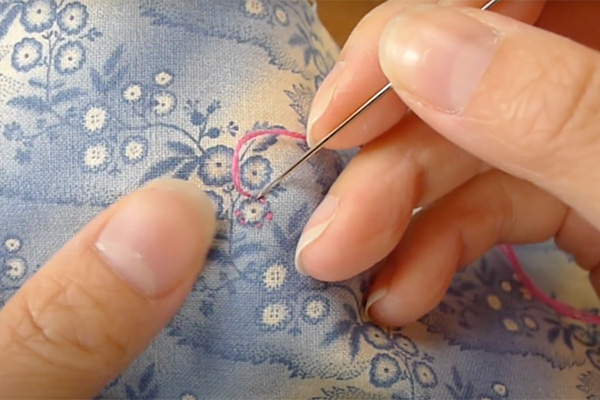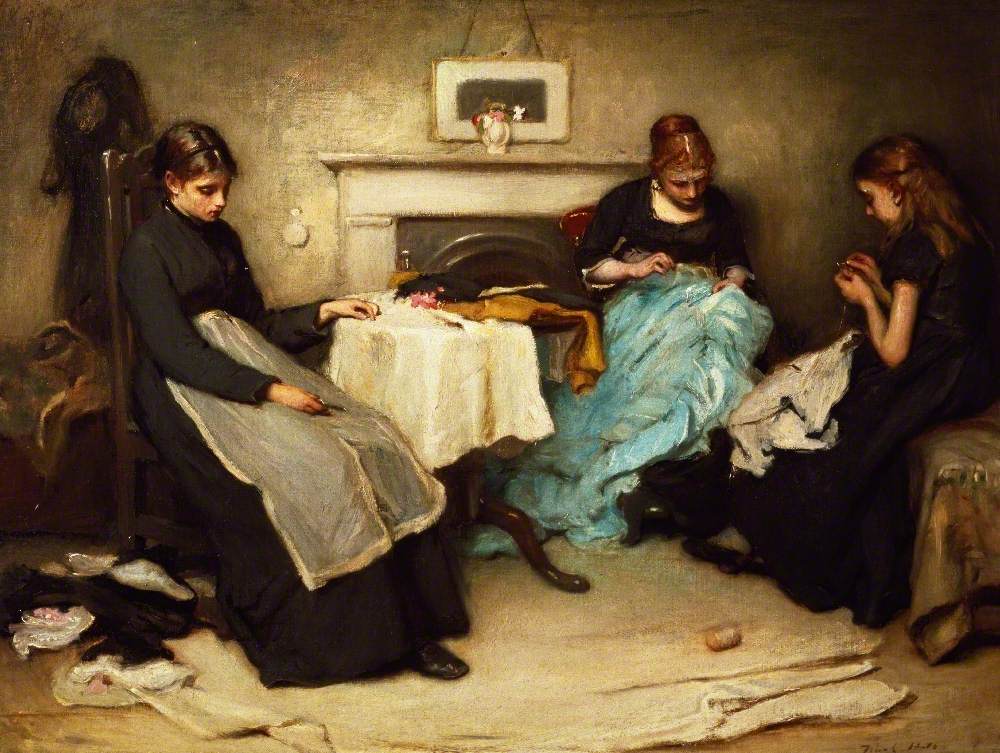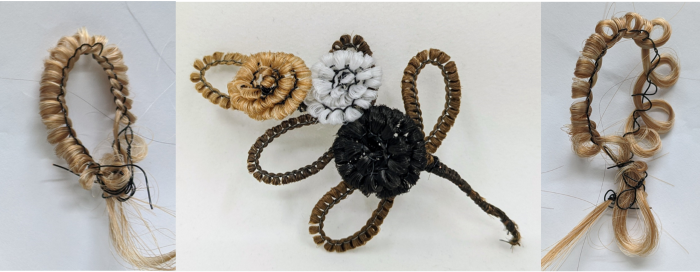Crafting in the classroom: a hands-on tool for connection in the digital world
Andrea Korda - 20 December 2021

In July 2020, in the middle of our first COVID summer, I gathered with a small group of historians, literary scholars and art historians over Zoom to learn how to make hair art.
The idea of making decorative objects like jewelry and precious keepsakes from human hair may seem distasteful today, but it was a popular practice in 19th century Britain. As I learned to twist wire around hair and form it into floral shapes, I began to understand why these seemingly morbid objects had been so appealing. Though we were all working with synthetic hair, our shared experience of physical distancing and travel restrictions sensitized us to the ways human hair could stand in for an absent loved one. We began to consider the forms of presence, connection and even intimacy that hair art had represented at an earlier moment in history. Hair art—with its emphasis on tactility, physical connection and bodily presence—started to seem like an antidote to the virtual, screen-mediated world taking shape around us. And we wondered how we could incorporate some of this tactility, connection and presence into our courses that would all be delivered remotely in the coming year.
That first Zoom gathering turned into the starting point for the Crafting Communities project. Conceived as a year-long series of virtual events, Crafting Communities included a series of roundtables on Victorian material culture and hands-on workshops on hair art, broderie anglaise (a form of embroidery), 19th century scrapbooking and block printing.
In order to provide meaningful work opportunities for students, we added legacy projects that documented these events. A team of 10 research assistants from across the universities of Alberta, Manitoba and Victoria produced a virtual exhibition of the objects discussed at our roundtables, a podcast featuring interviews with curators, artists, librarians and scholars who contributed to our events and a website that offers step-by-step tutorials on 19th century crafts and serves as a hub for the project.

In the absence of in-person teaching, and without possibilities for field trips, our events, exhibition, podcast and tutorials offered alternative ways of enriching the digital classroom experience. Though accessed through a screen, these resources emphasize what we can learn from first-hand engagement with material objects. As the project progressed, we found our experiments with hands-on crafting were enhanced by our attention to historical objects, and that our engagement with historical objects were, in turn, deepened by our time spent crafting.
Of course, a single class session spent with our online tutorial on broderie anglaise is not enough for students to master this white-on-white embroidery technique, but mastery is not the goal. When students sit down with needle and thread, they will begin to understand the remarkable amount of work that went into embroidered garments, which were created by hand. Students can engage in this laborious practice while learning that it resulted in everyday, washable wear and not cherished finery. This hands-on experience can provide valuable context for a course in 19th century literature or art, increasing students’ appreciation of classroom texts, while also developing their understanding of historical gender roles, industrialization, the cotton industry or changing values and practices related to laundering.

My own first efforts at broderie anglaise and hair art were promising in terms of intellectual engagement but less successful in terms of actual output—as was the case for others who joined me in these crafting adventures. Some participants in our workshops ended up with a single embroidered eyelet hole or a clump of loopy synthetic hair. In our unaccustomed hands, the materials needed to embroider and loop hair were unwieldy, and not all of our results can be described as successes. But what we gained was an experiential engagement with 19th century material culture, one that offered a change from our usual approaches of reading, looking and writing. At the same time, crafting together helped us build community across distances when we met and shared our crafting successes and failures through webcams. Crafting in the classroom can have similar results, with the additional advantage of making course materials more accessible by offering multiple modalities for learning.
With the first year of the Crafting Communities project behind us, my colleagues and I are now working to expand our resources by creating lesson plans for humanities classrooms that incorporate crafting. Once again, we have a team of talented research assistants, including three Augustana students, who are helping create and pilot lesson plans, resources and assignments that will be accessible online. I invite you to visit the Crafting Communities website to try out our crafting tutorials, engage with other resources housed at the site and learn for yourself through the art of making.
 Crafting Communities is a collaboration between Andrea Korda, Mary Elizabeth Leighton and Vanessa Warne, and is supported by the Social Sciences and Humanities Research Council of Canada, the Victorian Studies Association of Western Canada and the universities of Alberta, Manitoba and Victoria. To learn more about the project, read our full Crafting Communities blog series at JVC Online, from which this article was adapted.
Crafting Communities is a collaboration between Andrea Korda, Mary Elizabeth Leighton and Vanessa Warne, and is supported by the Social Sciences and Humanities Research Council of Canada, the Victorian Studies Association of Western Canada and the universities of Alberta, Manitoba and Victoria. To learn more about the project, read our full Crafting Communities blog series at JVC Online, from which this article was adapted.